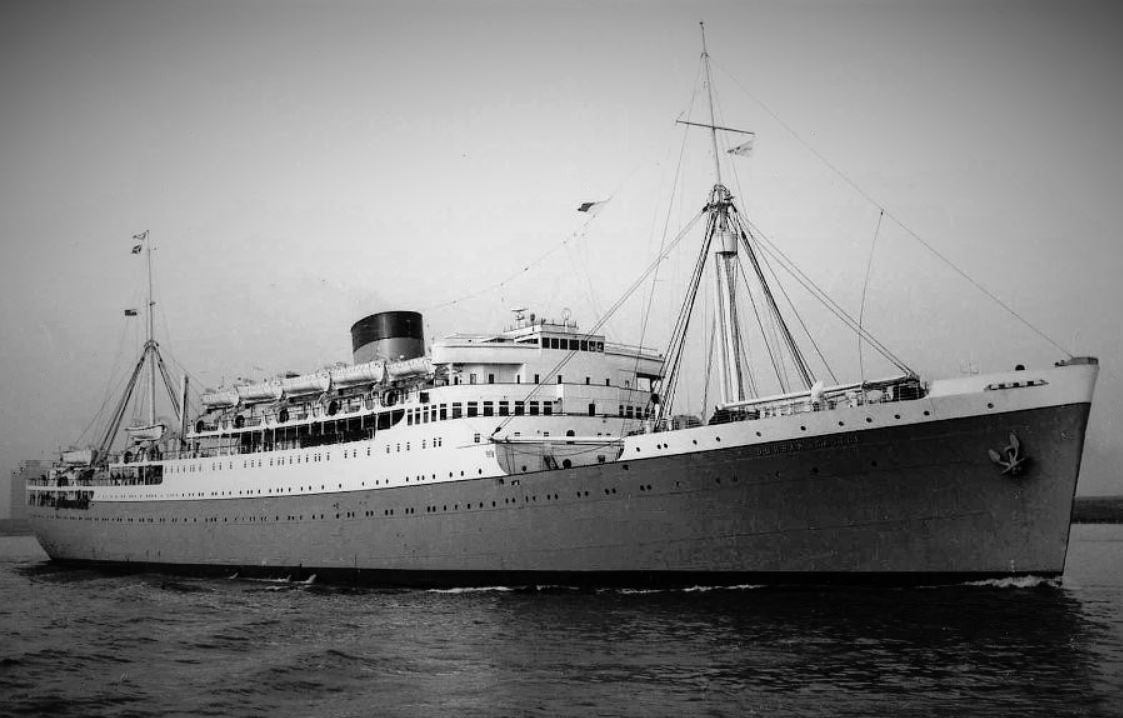HMT Durban Castle
From Our Contribution
Remarks
She was built for the Round Africa service and inaugurated the practice of naming ships after non-existent South African castles. In September 1939 she was converted into a troopship. When Greece fell in 1941 the King of Greece and his family first took refuge in Egypt and then South Africa from where the Durban Castle transported him, his family and entourage from Durban to the United Kingdom.
1942 Requisitioned by Royal Navy and named HMS Durban Castle and converted into a Landing Craft Infantry (LCI) capable of carrying 9 landing craft on each side. In November 1942 she took part in the North African landings at Azure, and during July 1943 the landings on Sicily, followed by Salerno and Anzio. On 15 Aug 1944 sahe landed troops near Cannes during the invasion of Southern France.
She returned to commercial service in 1946 still carrying her Anti-Airdraft gun platforms and with 9 lifeboats on each side replacing the landing craft. This austere situation was rectified when she was later re-furbished. In July 1947 she resumed service, initially on the mail service pending the return of the larger ships which were themselves being refurbished after war service, and then on the Round Africa service. On 28 Mar 1962 she completed her final voyage in London and in the following month was sold to Eisen & Metall GmbH of Hamburg for breaking up.

